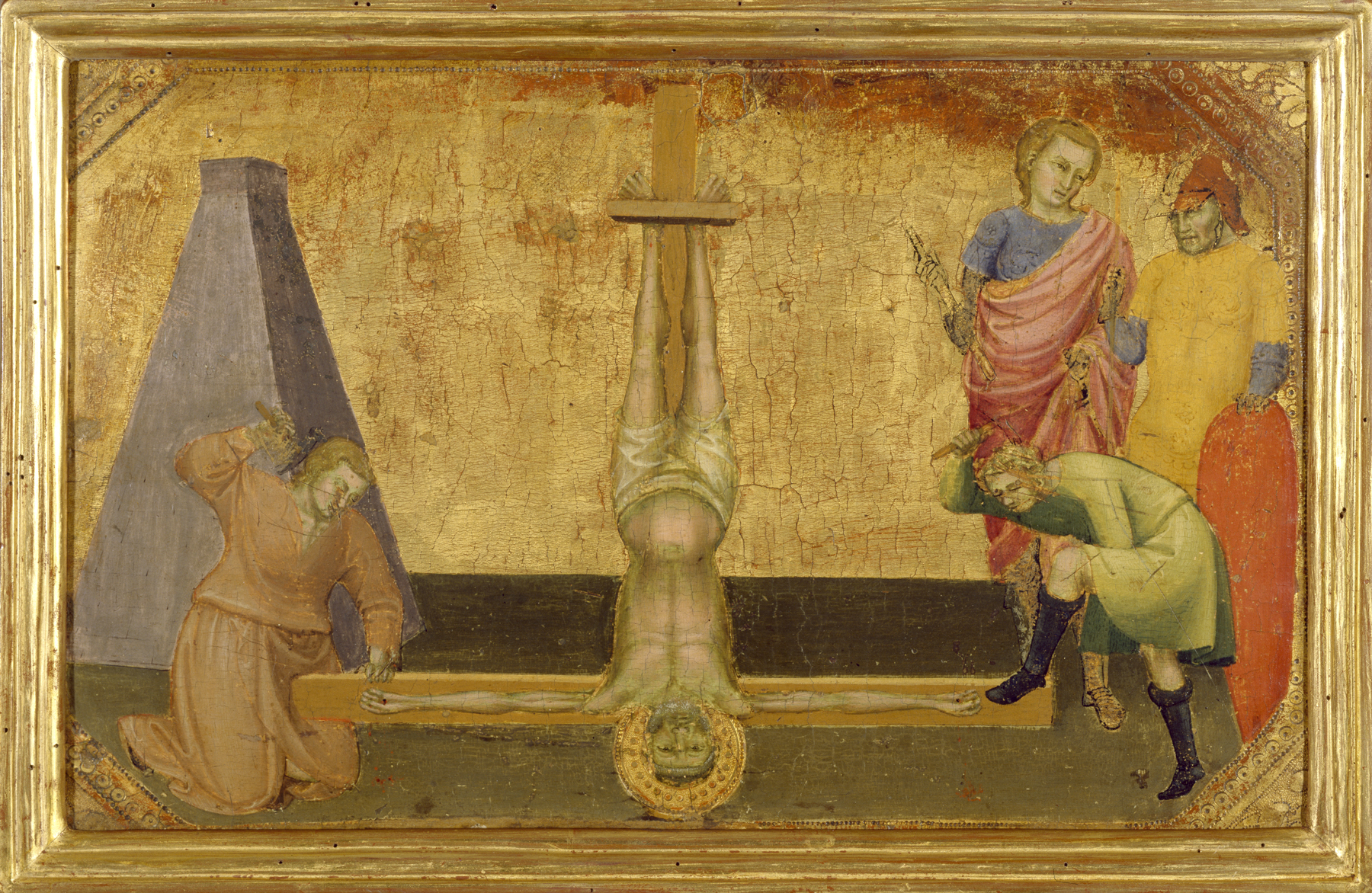The Crucifixion of Saint Peter
(Renaissance Europe )
This panel was once part of the "predella" (bottom frame) of a larger altarpiece dedicated to the Virgin and Child and surrounded by Sts. Peter, Paul, John the Baptist, and Jerome. The "predella" panels expanded upon the legends of the saints portrayed above them. According to tradition, St. Peter asked to be crucified upside down, as he felt he did not merit to be treated like Christ. The building visible on the left side was known as the Meta Romuli and, until its destruction in 1499, was a landmark in the area adjacent the Vatican where St. Peter's martyrdom took place. The desire for historical accuracy is conveyed by the realistic attitude of the two soldiers, shown busily nailing Peter to the cross.
Provenance
Provenance (from the French provenir, 'to come from/forth') is the chronology of the ownership, custody, or location of a historical object. Learn more about provenance at the Walters.
Don Marcello Massarenti Collection, Rome [date and mode of acquisition unknown] [1881 catalogue: no. 19; 1897 catalogue: no. 55, as Pietro Cavallini]; Henry Walters, Baltimore, 1902, by purchase; Walters Art Museum, 1931, by bequest.
Exhibitions
| 2006 | Lorenzo Monaco: A Bridge from Giotto's Heritage to the Renaissance. Galleria dell'Accademia, Firenze. |
| 1996 | To Arrest the Ravages of Time: Caring for Art at the Walters. The Walters Art Gallery, Baltimore. |
Geographies
Italy (Place of Origin)
Measurements
Painted surface H: 10 x W: 16 x D excluding cradle: 3/8 in. (25.4 x 40.7 x 1 cm)
Credit Line
Acquired by Henry Walters with the Massarenti Collection, 1902
Location in Museum
Not on view
Accession Number
In libraries, galleries, museums, and archives, an accession number is a unique identifier assigned to each object in the collection.
In libraries, galleries, museums, and archives, an accession number is a unique identifier assigned to each object in the collection.
37.688


